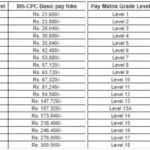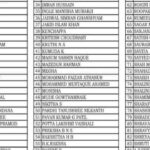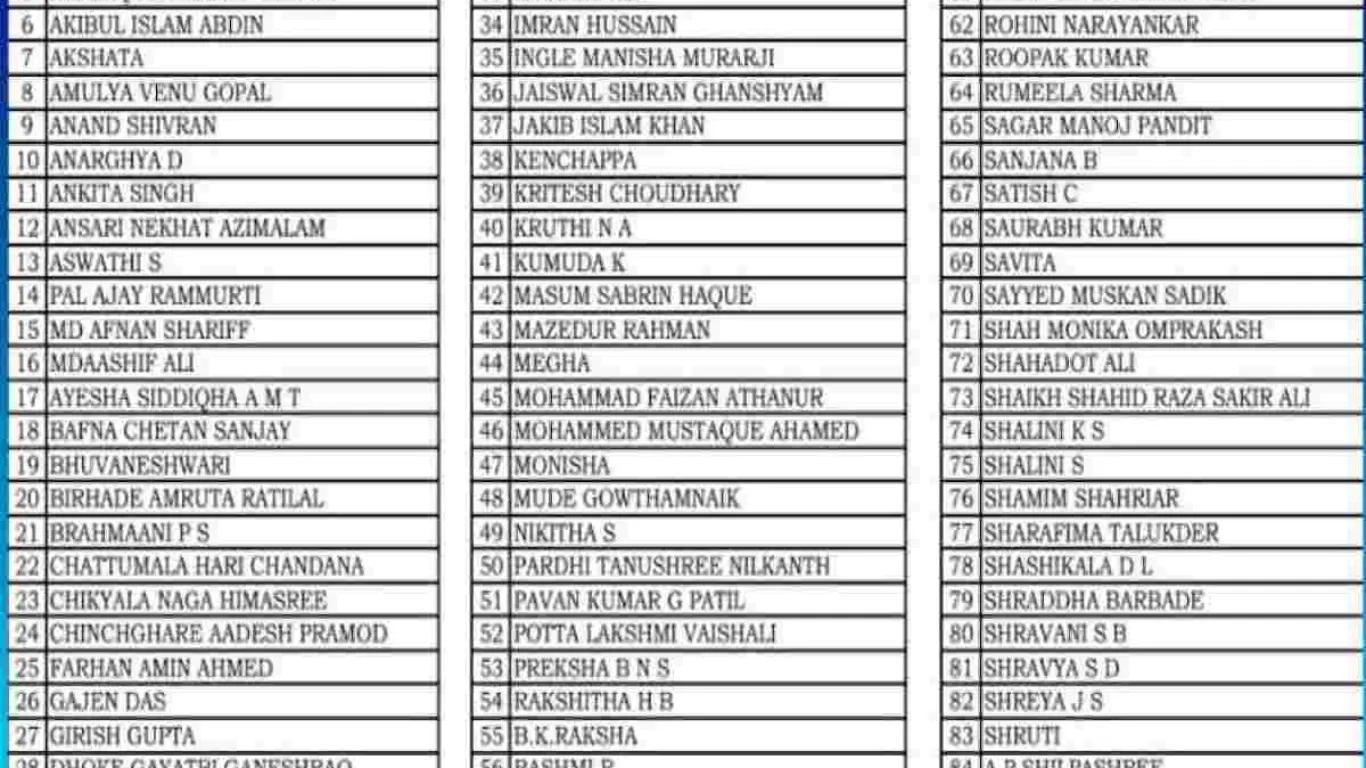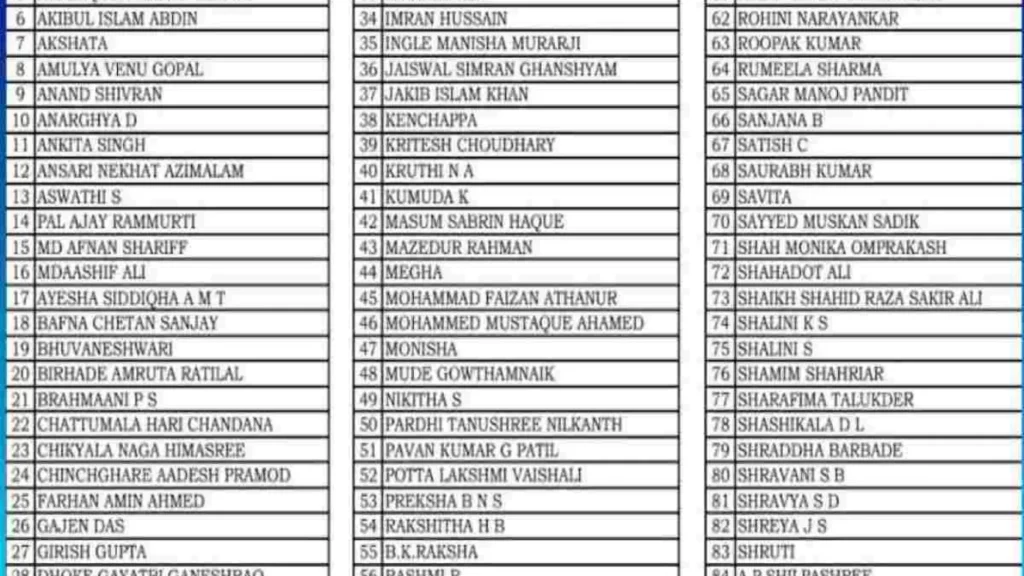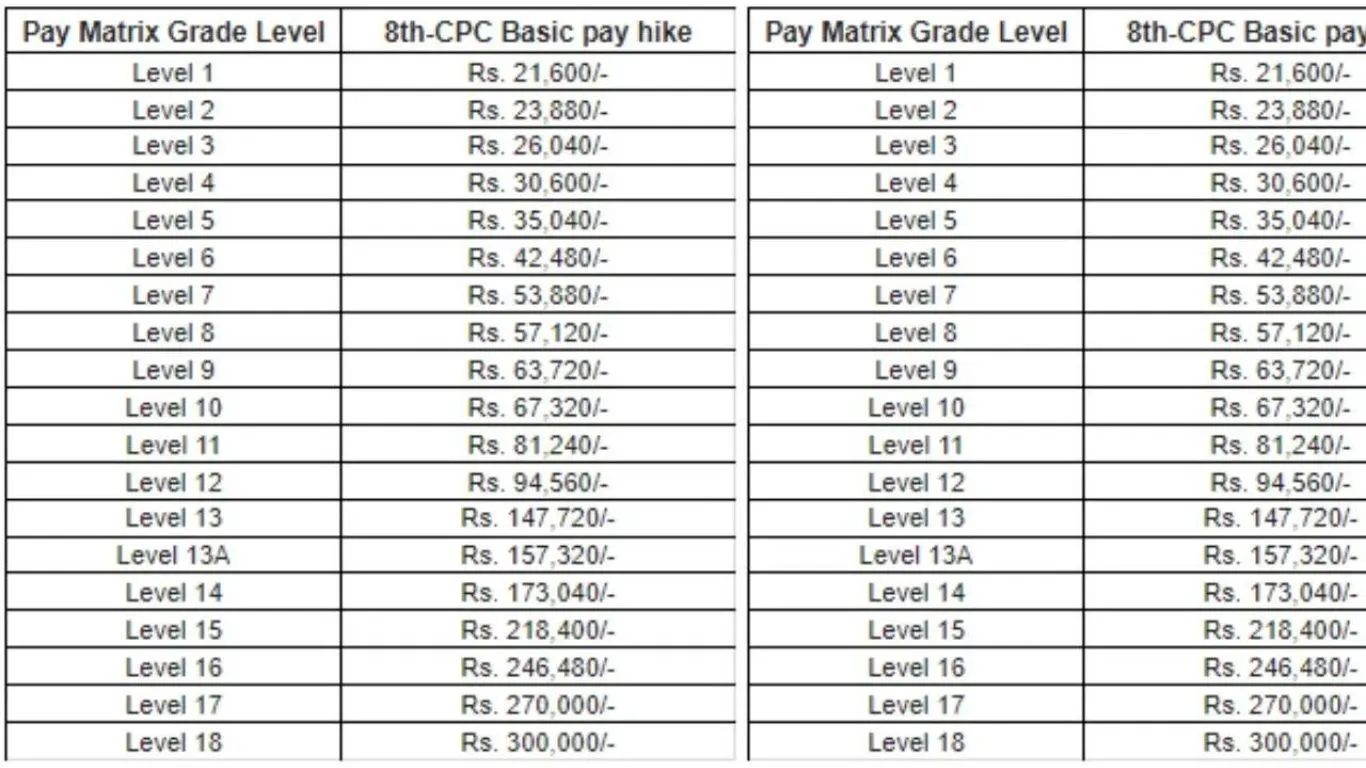E Shram Card चौथी किस्त 2022-23 इन श्रमिकों का आएगा पेमेंट लिस्ट देखें
आप सभी श्रम कार्ड धारकों को बता दें कि कुछ दिनों पहले ही श्रम कार्ड की नई लिस्ट जारी कर दी गई है। इस लिस्ट में जिन लोगों का नाम होगा सिर्फ उन्हीं के खाते में पैसा जमा किया जाएगा।
श्रम कार्ड योजना के लिए आवेदन करने वाले असंगठित क्षेत्र में काम कर रहे श्रमिकों के खाते में मार्च महीने में श्रम कार्ड का पैसा जमा किया जाएगा।
केंद्र सरकार के द्वारा शुरू की गई इस योजना के अंतर्गत असंगठित क्षेत्र के श्रमिकों को हर महीने ₹500 की भत्ता-राशि आर्थिक सहायता के तौर पर दी जाती है।
श्रम कार्ड योजना के तहत असंगठित क्षेत्र में काम कर रहे श्रमिकों को ₹200000 की दुर्घटना बीमा भी दी जाती है।
अगर आप जानना चाहते हैं कि आपको अगली किस्त मिलेगी या नहीं, तो फिर इस लेख को अंत तक ध्यानपूर्वक पढ़ें और श्रम कार्ड की नई लिस्ट में अपना नाम चेक करें।
श्रम कार्ड की नई लिस्ट चेक
आप सभी श्रम कार्ड धारकों को बता दें कि श्रम कार्ड की नई लिस्ट जारी कर दी गई है। इस लिस्ट के अनुसार ही सभी के खाते में श्रम कार्ड का पैसा जमा किया जाएगा।
अगर आप श्रम कार्ड की लिस्ट में अपना नाम चेक करना चाहते हैं तो फिर आगे बताए गए प्रक्रिया की मदद से लिस्ट में अपना नाम जरूर चेक करें।
खाद्य आपूर्ति विभाग के द्वारा पात्र श्रम कार्ड धारकों की लिस्ट कुछ दिनों पहले ही इस योजना की आधिकारिक वेबसाइट पर जारी कर दी गई है।
आप सभी श्रम कार्ड धारकों को बता दें कि इस योजना के अंतर्गत बहुत से अपात्र श्रमिक आवेदन कर चुके हैं और इसका लाभ उठा रहे हैं।
इसलिए खाद्य आपूर्ति विभाग के द्वारा सभी अपात्र श्रमिकों की छानबीन की गई है और जो इस योजना के पात्र हैं उन सभी का नाम लिस्ट में जारी किया गया है बाकी का नाम हटा दिया गया है।
श्रम कार्ड योजना के अंतर्गत अब तक लगभग 25 करोड़ से अधिक श्रमिक आवेदन कर चुके हैं। लेकिन सिर्फ 10 करोड़ श्रमिकों का ही नाम लिस्ट में जारी किया गया है।
ऐसा बताया जा रहा है कि 25 करोड़ श्रमिकों में से सिर्फ 10 करोड़ श्रमिक ही इस योजना के पात्र हैं और उन्हीं का नाम लिस्ट में जारी किया गया है।
लिस्ट में जिन 10 करोड़ श्रमिकों का नाम है उनके खाते में श्रम कार्ड का पैसा मार्च महीने में जमा किया जाएगा।
श्रम कार्ड की लिस्ट में अपना नाम कैसे चेक करें?
अगर आप श्रम कार्ड की लिस्ट में अपना नाम चेक करना चाहते हैं तो फिर नीचे बताए गए प्रक्रिया को फॉलो करें और लिस्ट में अपना नाम चेक करें।
- श्रम कार्ड की लिस्ट में अपना नाम चेक करने के लिए सबसे पहले आपको इस योजना की आधिकारिक वेबसाइट पर जाना होगा।
- आधिकारिक वेबसाइट के होम पेज पर जाने के बाद आपको श्रम कार्ड की लिस्ट चेक करने का विकल्प मिलेगा, उस पर क्लिक करना होगा।
- क्लिक करने के बाद आपके सामने एक नया पेज खुल जाएगा. वहां आपको श्रम कार्ड नंबर या मोबाइल नंबर दर्ज करते हुए जेनरेट ओटीपी विकल्प पर क्लिक करना होगा।
- ओटीपी जेनरेट करने के बाद अगले पेज में आपको उस ओटीपी को दर्ज करते हुए सबमिट बटन पर क्लिक करना होगा।
- सबमिट बटन पर क्लिक करने के बाद आपके सामने एक नया पेज खुल जाएगा। जहां आपको श्रम कार्ड की नई लिस्ट देखने को मिलेगी।
- अब आप इस लिस्ट में अपना नाम चेक कर सकते हैं और पता कर सकते हैं कि आपके खाते में श्रम कार्ड की अगली किस्त जमा की जाएगी या नहीं।
- अगर आप को श्रमिक कार्ड की लिस्ट में अपना नाम नहीं मिल रहा है तो फिर आप ऊपर दिए गए सर्च बॉक्स में अपना नाम लिखकर चेक कर सकते हैं। इसमें आपको आसानी से नाम मिल जाएगा।
श्रम कार्ड का पैसा क्यों नहीं आ रहा है?
अगर आपके खाते में भी श्रम कार्ड का पैसा नहीं आ रहा है तो फिर आपको परेशान होने की बिल्कुल भी जरूरत नहीं है। क्योंकि यह प्रक्रिया करने के बाद आपके खाते में पैसा आना शुरू हो जाएगा।
अगर आपके खाते में श्रम कार्ड का पैसा नहीं आ रहा है तो इसका मतलब है कि आपने श्रम कार्ड की ईकेवाईसी नहीं कराई है इसीलिए आपके खाते में पैसा नहीं आ रहा है।
श्रम कार्ड की ईकेवाईसी आप इस योजना की आधिकारिक वेबसाइट पर जाकर भी कर सकते हैं। इसके अलावा आप अपने नजदीकी सीएससी सेंटर पर भी जाकर ईकेवाईसी की प्रकिया कर सकते हैं।
श्रम कार्ड की ईकेवाईसी की प्रक्रिया के लिए आपको अपने नजदीकी सीएससी सेंटर पर जाकर आवेदन फॉर्म लेना होगा।
आवेदन फॉर्म लेने के बाद उसे सही से भरकर मांगे सभी दस्तावेजों को अटैच करके सीएससी सेंटर पर जमा करना होगा।
कुछ दिनों के अंदर ही आपकी ईकेवाईसी प्रक्रिया पूरी हो जाएगी। उसके बाद से आपके खाते में श्रम कार्ड का पैसा आना शुरू हो जाएगा।
इसके अलावा अगर आपका आधार कार्ड बैंक अकाउंट से लिंक नहीं होगा तो फिर आपके खाते में श्रम कार्ड का पैसा नहीं आएगा।
यदि आपने श्रम कार्ड की ईकेवाईसी प्रक्रिया पूरी कर ली है और आपके खाते में श्रम कार्ड का पैसा नहीं आ रहा है तो इसका मतलब है कि आपका बैंक अकाउंट आधार कार्ड से लिंक नहीं है।
आधार कार्ड को बैंक अकाउंट से लिंक करने के लिए आपको सबसे पहले अपने बैंक पर जाना होगा और फिर वहां से आवेदन फॉर्म लेकर उसे सही से भरकर बैंक में जमा करना होगा।
आधार कार्ड बैंक अकाउंट से लिंक होने के बाद आपके खाते में श्रम कार्ड का सारा पैसा आना शुरू हो जाएगा।
निष्कर्ष
आज के इस लेख में हमने आप सभी को श्रम कार्ड की नई लिस्ट में अपना नाम कैसे चेक करें इसके बारे में बताया है।
आप सभी श्रम कार्ड धारकों को बता दें कि श्रम कार्ड की नई लिस्ट जारी कर दी गई है जिसमें सिर्फ उन्ही श्रमिकों का ही नाम शामिल है जो योग्य हैं।
ऐसा बताया जा रहा है कि इस नई लिस्ट में जिन 10 करोड़ श्रमिकों का नाम है सिर्फ उन्हीं के खाते में श्रम कार्ड का पैसा जमा किया जाएगा।
अगर आप जानना चाहते हैं कि आपको अगली किस्त मिलेगी या नहीं, तो फिर ऊपर बताए गए प्रक्रिया की मदद से श्रम कार्ड की नई लिस्ट चेक करें।
| Whatsapp Channel | Join |
| Telegram Channel | Click Here |
| Homepage | Click Here |

